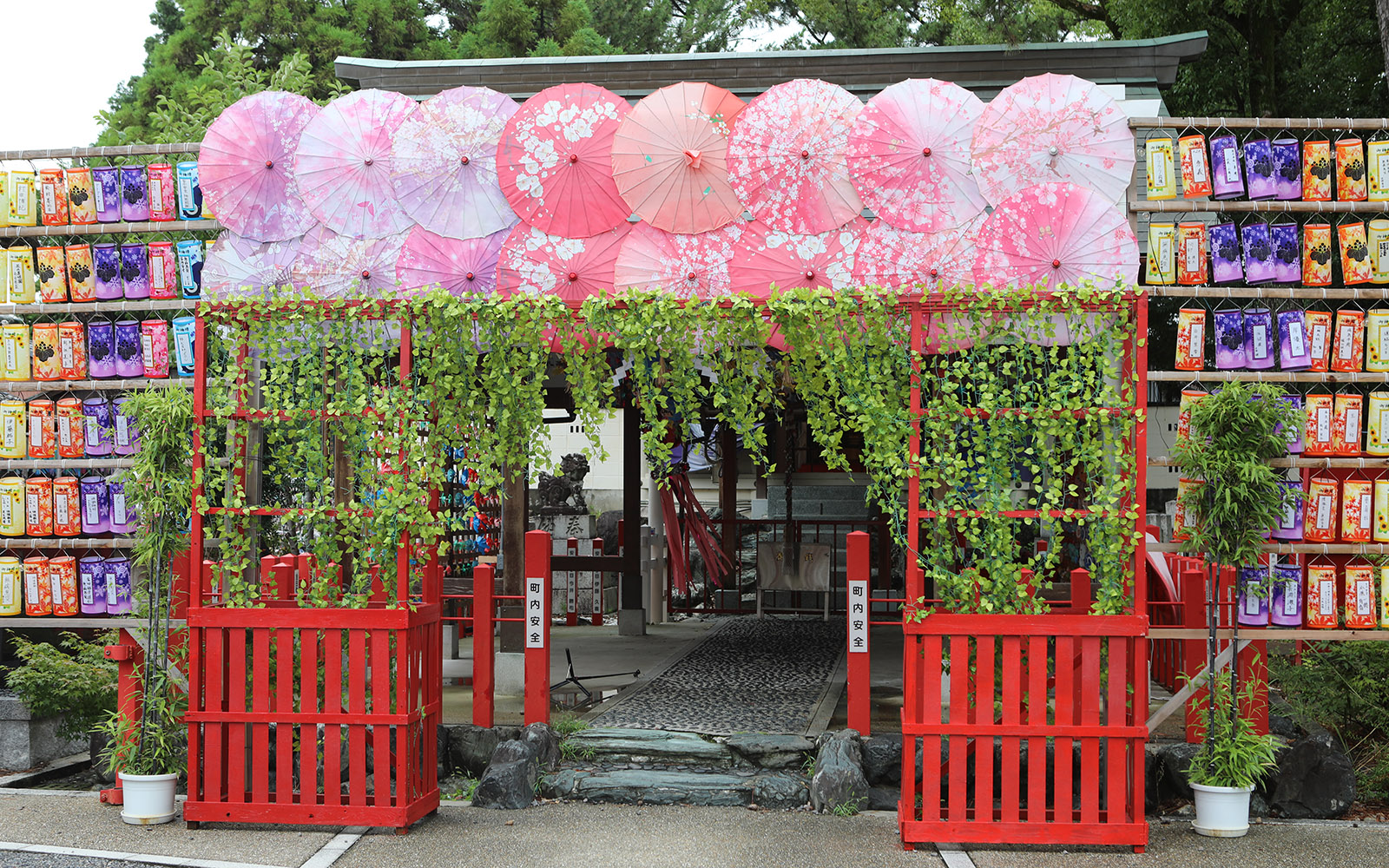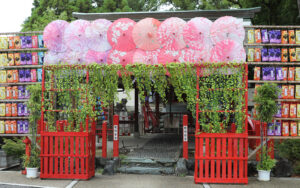Wakeoe Shrine


Wakeoe Shrine in Nagoya is a shrine of contrasts. While the traditional side boasts sacred trees, enshrined spirits and an area dedicated to the ancient lucky Chinese god Ebisu, it also has a vibrant, colorful side, with areas full of unusual objects and vivid splashes of color that have made the shrine a hit on social media.
From the entrance, the shrine literally shows its colors. Colorful lanterns line the outside walls, and brightly colored umbrellas encircle the entrance to the main area. Even usually solemn areas are explosions of color: splashes of bright paint adorn the bamboo garden, masks and garish lanterns adorn the walls leading to the enshrined deity, and colorful balls float in the water for ritual cleansing.
Modern Meets Tradition
 Photo by: Matt Coslett
Photo by: Matt CoslettDespite all the colorful modern trappings, proceed a little deeper into the shrine and the ancient side soon reveals itself. The architecture dates back to the Heian Period, with records mentioning it as far back as 927 AD, the courtly era in Japan.
Wakeoe Shrine has remained popular for so long thanks to legends about it boosting prosperity. Deep within the shrine is a statue of the lucky Chinese god Ebisu, surrounded by giant gold coins. It is said that making tributes to him is associated with prosperity in business.
If that isn’t enough good fortune, the rock next to the deity can further boost your fortunes. By breaking a disk representing your setbacks across the rock, you can rid yourself of bad luck or curses, similar to the nearby Hiyoshi Shrine.
The shrine also hosts a traditional annual autumn festival, during which the shrine is lit up at night and performers dance to taiko drums with small fans.
A Social Media Famous Shrine
 Photo by: Matt Coslett
Photo by: Matt CoslettDespite many shrines being reluctant to receive attention on social media, Wakeoe Shrine has embraced its success, offering visitors a chance to create unique experiences, such as borrowing priest or shrine maiden costumes complete with umbrellas and fox masks for the perfect selfie.
The shrine encourages repeat visits by offering a different stamp (goshuin), every month. From fireworks and fans in summer to samurai helmets in spring, fans of the shrine can visit every month for an entire year to collect them all.
A Shrine of Two Cities
Appropriately, Wakeoe Shrine is based in Nagoya, a city that is shedding its image as a stopover between Osaka and Tokyo and becoming an attraction in its own right, attracting visitors for its mixture of modern and samurai-era attractions. Like the city, Wakeoe embraces both its traditional and modern aspects, offering something for the selfie-loving teen all the way to the businessperson praying for good fortune.






